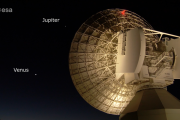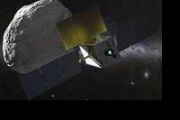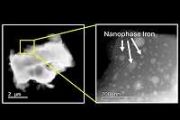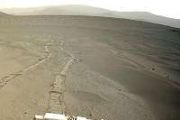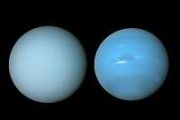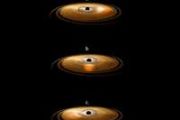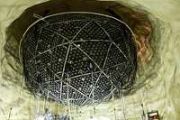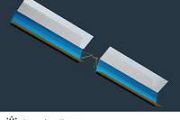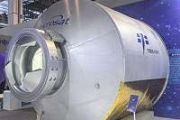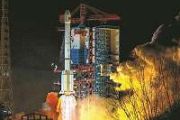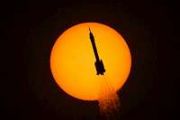
Copernical Team
Can China claim ownership rights on the Moon
 NASA Administrator Bill Nelson recently expressed concerns over China's aims in space, and in particular, that China would, in some way, claim ownership over the Moon and stop other countries from exploring it. In an interview with a German newspaper, Nelson cautioned, "We must be very concerned that China is landing on the Moon and saying: 'It's ours now and you stay out.'" China immediately de
NASA Administrator Bill Nelson recently expressed concerns over China's aims in space, and in particular, that China would, in some way, claim ownership over the Moon and stop other countries from exploring it. In an interview with a German newspaper, Nelson cautioned, "We must be very concerned that China is landing on the Moon and saying: 'It's ours now and you stay out.'" China immediately de Experts find way to make better use of lunar samples
 Though China now has more than 1.7 kilograms of lunar soil gathered from its historic Chang'e 5 mission, the government practices a prudent policy when it comes to distributing these valuable samples to researchers.
Professor Wang Zaicong, a senior researcher at the School of Earth Sciences of the China University of Geosciences in Wuhan, Hubei province, said his team received 200 milligra
Though China now has more than 1.7 kilograms of lunar soil gathered from its historic Chang'e 5 mission, the government practices a prudent policy when it comes to distributing these valuable samples to researchers.
Professor Wang Zaicong, a senior researcher at the School of Earth Sciences of the China University of Geosciences in Wuhan, Hubei province, said his team received 200 milligra Jacobs Awarded $3.9B Engineering and Science Contract at NASA
 Jacobs (NYSE:J) was awarded the JSC Engineering, Technology, and Science (JETS) II contract at NASA Johnson Space Center in Houston, Texas.
Jacobs is scheduled to begin contract transition on Aug. 1 to continue providing engineering and scientific products and technical services for NASA at Johnson Space Center (JSC). The contract maximum value is estimated at approximately $3.9 billion ov
Jacobs (NYSE:J) was awarded the JSC Engineering, Technology, and Science (JETS) II contract at NASA Johnson Space Center in Houston, Texas.
Jacobs is scheduled to begin contract transition on Aug. 1 to continue providing engineering and scientific products and technical services for NASA at Johnson Space Center (JSC). The contract maximum value is estimated at approximately $3.9 billion ov Follow CAPSTONE's Four-Month Journey to the Moon in Real Time
 NASA's microwave oven-sized CubeSat dubbed CAPSTONE is flying solo, blazing an unusual yet efficient deep space route to the Moon. The CubeSat is heading toward an unique orbit intended in the future for Gateway, a lunar space station built by the agency and its commercial and international partners that will support science and human exploration under Artemis.
During the next four months,
NASA's microwave oven-sized CubeSat dubbed CAPSTONE is flying solo, blazing an unusual yet efficient deep space route to the Moon. The CubeSat is heading toward an unique orbit intended in the future for Gateway, a lunar space station built by the agency and its commercial and international partners that will support science and human exploration under Artemis.
During the next four months, Everyone gets to savour the Avanavero flavours: Sols 3528-3529
 Both the CheMin and SAM instruments have dined on the Avanavero drill samples and have decided their appetites are sated. CheMin has completed X-ray diffraction mineralogical analysis of the Avanavero drill sample, and SAM their Evolved Gas Analysis. Both instrument teams are satisfied with their analyses and SAM are not opting to do a Gas Chromatography-Mass Spectrometry run.
Now it is th
Both the CheMin and SAM instruments have dined on the Avanavero drill samples and have decided their appetites are sated. CheMin has completed X-ray diffraction mineralogical analysis of the Avanavero drill sample, and SAM their Evolved Gas Analysis. Both instrument teams are satisfied with their analyses and SAM are not opting to do a Gas Chromatography-Mass Spectrometry run.
Now it is th NASA Mirrors on ESA Pathfinder to Empower Space Geodesy
 NASA will supply the upcoming European Space Agency (ESA) Lunar Pathfinder mission with an array of laser retroreflectors, mirrored devices that reflect light back at its source. The retroreflectors will offer new opportunities for lunar science and space geodesy.
Geodesy is the scientific discipline that seeks to map Earth's shape, orientation, and gravity field. Space geodesy uses satell
NASA will supply the upcoming European Space Agency (ESA) Lunar Pathfinder mission with an array of laser retroreflectors, mirrored devices that reflect light back at its source. The retroreflectors will offer new opportunities for lunar science and space geodesy.
Geodesy is the scientific discipline that seeks to map Earth's shape, orientation, and gravity field. Space geodesy uses satell Searching for Sand Transport
 Perseverance is currently stopped for sampling at Skinner Ridge rock. Sampling activities constitute an important aspect of Perseverance's mission, and the rover's strategic path is developed around sampling stops. During these stops, the rover must remain stationary for at least twelve sols in order to conduct proximity science and activities related to abrasion and coring. But being parked in
Perseverance is currently stopped for sampling at Skinner Ridge rock. Sampling activities constitute an important aspect of Perseverance's mission, and the rover's strategic path is developed around sampling stops. During these stops, the rover must remain stationary for at least twelve sols in order to conduct proximity science and activities related to abrasion and coring. But being parked in Surprise - Again! Asteroid Bennu Reveals its Surface is Like a Plastic Ball Pit
 After analyzing data gathered when NASA's OSIRIS-REx spacecraft collected a sample from asteroid Bennu in October 2020, scientists have learned something astonishing: The spacecraft would have sunk into Bennu had it not fired its thrusters to back away immediately after it grabbed dust and rock from the asteroid's surface.
It turns out that the particles making up Bennu's exterior are so l
After analyzing data gathered when NASA's OSIRIS-REx spacecraft collected a sample from asteroid Bennu in October 2020, scientists have learned something astonishing: The spacecraft would have sunk into Bennu had it not fired its thrusters to back away immediately after it grabbed dust and rock from the asteroid's surface.
It turns out that the particles making up Bennu's exterior are so l Porosity of the moon's crust reveals bombardment history
 Around 4.4 billion years ago, the early solar system resembled a game of space rock dodgeball, as massive asteroids and comets, and, later, smaller rocks and galactic debris pummeled the moon and other infant terrestrial bodies. This period ended around 3.8 billion years ago. On the moon, this tumultuous time left behind a heavily cratered face, and a cracked and porous crust.
Now MIT scie
Around 4.4 billion years ago, the early solar system resembled a game of space rock dodgeball, as massive asteroids and comets, and, later, smaller rocks and galactic debris pummeled the moon and other infant terrestrial bodies. This period ended around 3.8 billion years ago. On the moon, this tumultuous time left behind a heavily cratered face, and a cracked and porous crust.
Now MIT scie NASA mirrors on ESA pathfinder to enhance lunar navigation

NASA will supply the upcoming European Space Agency (ESA) Lunar Pathfinder satellite with an array of laser retroreflectors, mirrored devices that reflect light back at its source. The retroreflectors will validate navigation capabilities that will be critical to the Artemis missions and future lunar exploration.












